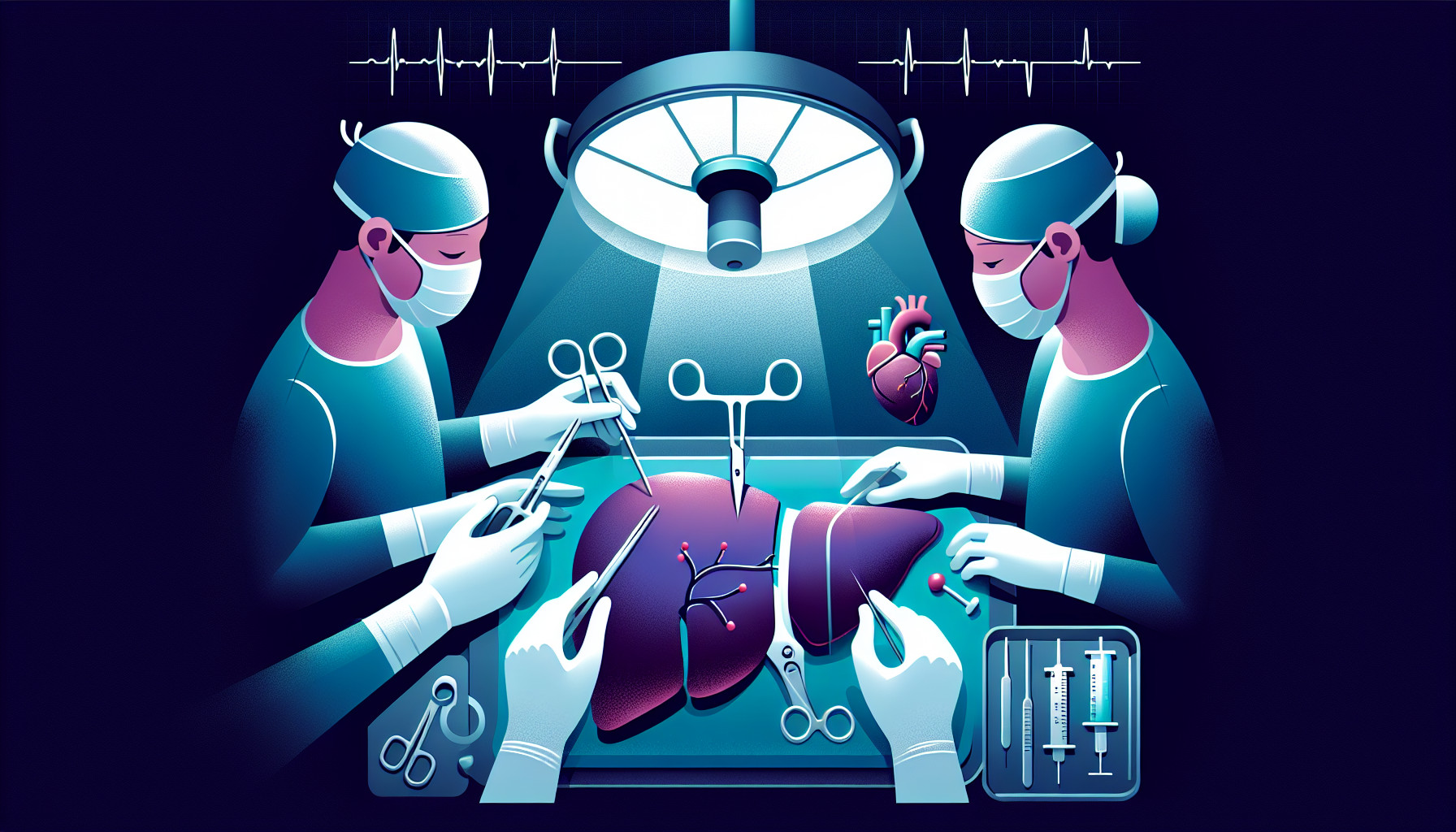Our Summary
This research paper discusses the recent changes and improvements in the process of evaluating and choosing patients for liver transplant. The process has become more intricate and ongoing due to advancements in several areas.
Three main themes are involved in the evaluation: choosing the right patient, finding the right donor, and the expected outcome after transplantation. The patient selection process has changed significantly due to new ways of assessing the patient’s health status, the option of weight-loss surgery at the time of liver transplant for overweight patients, and improved treatments and prediction tools for liver and bile duct cancers.
The choice of donor has also become more important, with new methods to preserve the organ before transplantation leading to better outcomes even when the organ comes from less-than-ideal sources. This, along with the increased use of organs from donors with hepatitis C and the use of parts of livers from donors, has expanded the donor pool.
Finally, the paper talks about the challenges of selecting critically ill patients for transplant, such as those with severe alcohol-related hepatitis or those with acute-on-chronic liver failure. It highlights the need for improved tools to weigh the potential benefits against the risks.
Overall, the paper emphasizes that the liver transplant evaluation process is constantly evolving due to scientific advances and changes in demographics and policies, and that medical professionals need to keep up to date with these changes to provide the best care for their patients.
FAQs
- What recent advances have been made in the evaluation and selection of liver transplant candidates?
- How have improvements in diagnostic and prognostic tools transformed the selection process for liver transplant candidates?
- How have changes in allocation and distribution impacted the evaluation and selection of liver transplant candidates?
Doctor’s Tip
One helpful tip a doctor might tell a patient about liver transplant is to follow a healthy lifestyle before and after the transplant. This includes maintaining a balanced diet, avoiding alcohol and tobacco use, staying physically active, and taking medications as prescribed. Taking care of your overall health can improve the success of the transplant and help prevent complications.
Suitable For
Patients who are typically recommended for liver transplant include those with end-stage liver disease, acute liver failure, hepatocellular carcinoma, autoimmune liver disease, metabolic liver disease, and certain genetic liver disorders. In recent years, there have been advances in candidate selection criteria, donor selection, and transplant outcomes, leading to expanded criteria for transplant candidacy and improved diagnostic and prognostic tools. Additionally, the introduction of dynamic frailty indices, bariatric surgery for obese patients, and improved therapies for hepatobiliary malignancies have further refined the evaluation process. With the increasing utilization of marginal donor organs, including those from donors with hepatitis C virus, and advancements in hypothermic organ preservation, donor selection has become a critical aspect of the evaluation process. Furthermore, the recognition of acute alcohol-related hepatitis and acute-on-chronic liver failure has led to the refinement of tools for selecting critically ill patients for liver transplant. Overall, the evaluation and selection of liver transplant candidates continue to evolve and require ongoing incorporation of new advancements into clinical practice.
Timeline
Before liver transplant:
- Patient is diagnosed with end-stage liver disease and is referred for a liver transplant evaluation.
- Patient undergoes a thorough evaluation including medical history, physical examination, imaging studies, blood tests, and psychosocial assessment.
- Patient is placed on the transplant waiting list and waits for a suitable donor liver to become available.
- Patient may undergo additional tests or treatments to optimize their health before transplant surgery.
After liver transplant:
- Patient undergoes liver transplant surgery, which typically takes several hours.
- Patient is closely monitored in the intensive care unit immediately after surgery.
- Patient may experience complications such as infection, rejection, or organ dysfunction in the days and weeks following surgery.
- Patient undergoes regular follow-up appointments and monitoring to ensure the success of the transplant.
- Patient may need to take immunosuppressive medications for the rest of their life to prevent rejection of the transplanted liver.
- Patient gradually recovers and resumes normal activities, with the goal of achieving improved quality of life and overall health.
What to Ask Your Doctor
- Am I a suitable candidate for a liver transplant?
- What are the potential risks and complications associated with a liver transplant procedure?
- What is the expected outcome and success rate of a liver transplant in my specific case?
- How long is the wait time for a suitable donor liver?
- What is the post-transplant recovery process like, and how long is the expected recovery time?
- What lifestyle changes will I need to make post-transplant to ensure the success of the procedure?
- What medications will I need to take post-transplant, and what are the potential side effects of these medications?
- How often will I need to follow up with my transplant team after the procedure?
- Are there any support groups or resources available for liver transplant patients?
- What are the long-term expectations and potential complications I should be aware of post-transplant?
Reference
Authors: Kriss M, Biggins SW. Journal: Curr Opin Organ Transplant. 2021 Feb 1;26(1):52-61. doi: 10.1097/MOT.0000000000000829. PMID: 33278150
